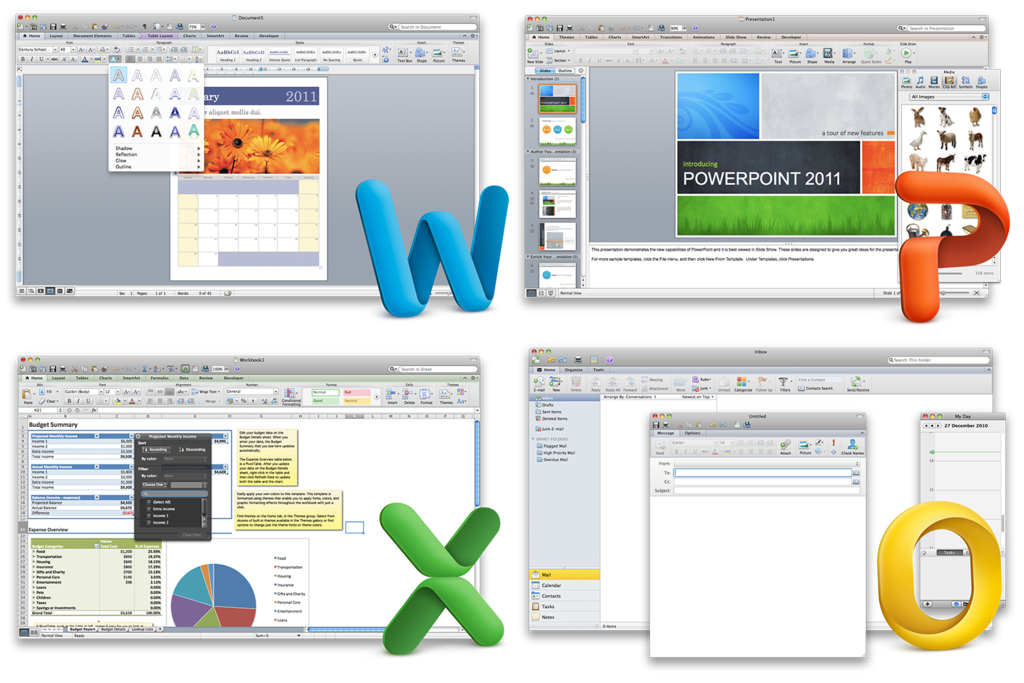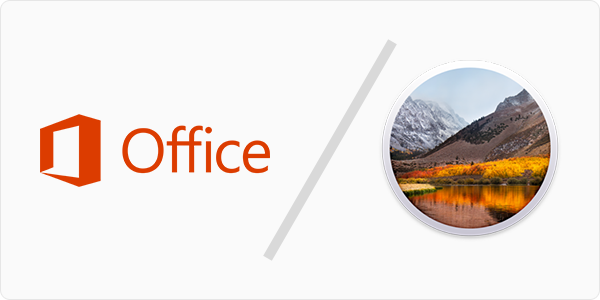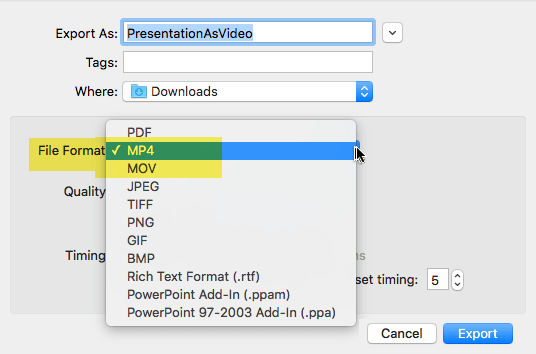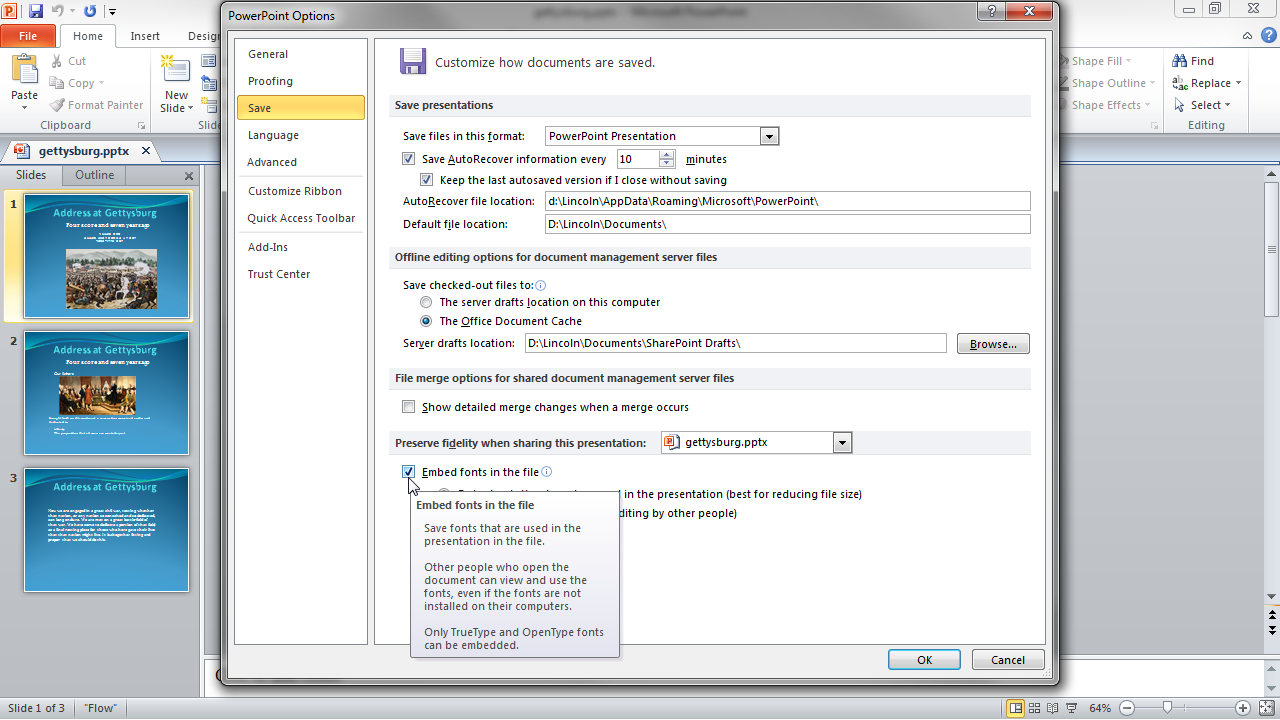Start quickly with the most recent versions of Word, Excel, PowerPoint, Outlook, OneNote and OneDrive —combining the familiarity of Office and the unique Mac features you love. Work online or offline, on your own or with others in real time—whatever works for what you’re doing. Unlock the full Microsoft Office experience with a qualifying Microsoft 365 subscription for your phone, tablet, PC, and Mac. Monthly Microsoft 365 subscriptions purchased from the app will be charged to your App Store account and will automatically renew within 24 hours prior to the end of the current subscription period unless auto-renewal is.
- Download Microsoft Office 2011 Mac
- Microsoft Powerpoint For Mac 2011 Version
- How To Use Microsoft Powerpoint 2011 For Mac
- Microsoft Powerpoint 2011 Free Download For Mac
Microsoft Office for Mac 2011 applications shown on Mac OS X Snow Leopard | |
| Developer(s) | Microsoft |
|---|---|
| Initial release | October 26, 2010; 9 years ago |
| Stable release | |
| Operating system | Mac OS X 10.5.8 to macOS 10.14.6 |
| Type | Office suite |
| License | |
| Website | www.microsoft.com/mac/ |
Microsoft Office for Mac 2011 is a version of the Microsoft Officeproductivity suite for Mac OS X. It is the successor to Microsoft Office 2008 for Mac and is comparable to Office 2010 for Windows. Office 2011 was followed by Microsoft Office 2016 for Mac released on September 22, 2015, requiring a Mac with an x64 Intel processor and OS X Yosemite or later.
New features[edit]
Microsoft Office 2011 includes more robust enterprise support and greater feature parity with the Windows edition. Its interface is now more similar to Office 2007 and 2010 for Windows, with the addition of the ribbon. Support for Visual Basic for Applications macros has returned after having been dropped in Office 2008.[4][5] Purchasing the Home Premium version of Office for Mac will not allow telephone support automatically to query any problems with the VBA interface. There are however, apparently, according to Microsoft Helpdesk, some third party applications that can address problems with the VBA interface with Office for Mac.[citation needed] In addition, Office 2011 supports online collaboration tools such as OneDrive and Office Web Apps, allowing Mac and Windows users to simultaneously edit documents over the web. It also includes limited support for Apple's high-density Retina Displays, allowing the display of sharp text and images, although most icons within applications themselves are not optimized for this.
A new version of Microsoft Outlook, written using Mac OS X's Cocoa API, returns to the Mac for the first time since 2001 and has full support for Microsoft Exchange Server 2007.[6] It replaces Entourage, which was included in Office 2001, X, 2004 and 2008 for Mac.[7]
Limitations[edit]
Office for Mac 2011 has a number of limitations compared to Office 2010 for Windows. It does not support ActiveX controls,[8] or OpenDocument Format.[9][10] It also cannot handle attachments in Rich Text Format e-mail messages sent from Outlook for Windows, which are delivered as winmail.dat attachments.[citation needed] It also has several human language limitations, such as lack of support for right-to-left languages such as Arabic, Persian, and Hebrew [11] and automatic language detection. [12]
Microsoft does not support CalDAV and CardDAV in Outlook, so there is no way to sync directly Outlook through iCloud. Outlook also does not allow the user to disable Cached Exchange Mode, unlike the Windows version, and it is therefore not possible to connect to an Exchange Server without downloading a local cache of mail and calendar data. [13]
Office for Mac 2011 also has a shorter lifecycle than Office 2010, with support phasing out on October 10, 2017.[14] As 32-bit software, it will not run on macOS Catalina, released in 2019.[15]
Editions[edit]
Two editions are available to the general public. Home & Student provides Word, Excel and PowerPoint, while Home & Business adds Outlook and increased support.[16]Microsoft Messenger 8 is included with both editions, and Microsoft Communicator for Mac 2011, which communicates with Microsoft Lync Server, is available only to volume licensing customers.[17] Office 2011 requires an Intel Mac running Mac OS X 10.5.8 or later.[18]
| Applications and services | Home & Student | Home & Business | Academic | Standard |
|---|---|---|---|---|
| Word | Included | Included | Included | Included |
| PowerPoint | Included | Included | Included | Included |
| Excel | Included | Included | Included | Included |
| Outlook | Not included | Included | Included | Included |
| Communicator or Lync | Not included | Not included | Included | Included |
| Office Web Apps | Included | Included | Included | Included |
| Remote Desktop Connection | Not included | Included | Included | Included |
| Information Rights Management | Included | Included | Included | Included |
| Windows SharePoint Services Support | Not included | Included | Included | Included |
| Technical support | 90 days | 1 year | 90 days | ? |
The Home & Student edition is available in a single license for one computer and a family pack for three computers. The Home & Business edition is available in a single license for one computer and a multi-pack for two computers. The Standard edition is only available through Volume Licensing.[19] The Academic edition was created for higher education students, staff and faculty, and includes one installation.[20] Office for Mac is also available as part of Microsoft's Office 365 subscription programme.
Development[edit]
Microsoft announced Office 2011 in 2009.[21] There were 6 beta versions released:
- Beta 1
- Beta 2 (Version 14.0.0, Build 100326)
- Beta 3 (Build 100519)—announced on May 25, 2010[22]
- Beta 4 (Build 100526)
- Beta 5 (Build 100709)
- Beta 6 (Build 100802)

Access to beta versions was by invitation only,[23] although leaked copies were circulated among Mac file sharing websites.[24]
The final version was released to manufacturing on September 10, 2010,[25] was available to volume license customers a day later,[26] and made available to the general public on October 26, 2010.[27] Service Pack 1 was released on April 12, 2011.[28]

See also[edit]
References[edit]
- ^https://www.microsoft.com/en-us/download/details.aspx?id=55942
- ^'Microsoft Lifecycle Policy: Office 2011'. Support. Microsoft. Retrieved February 21, 2018.
- ^'Microsoft Lifecycle Policy: Lync 2011'. Support. Microsoft. Retrieved February 21, 2018.
- ^Keizer, Gregg (May 14, 2008). 'Microsoft will bring back macros to Mac Office in 2011'. Computerworld. Retrieved April 21, 2010.
- ^Seff, Jonathan (May 13, 2008). 'Microsoft to bring back Visual Basic in Office for Mac'. Macworld. Retrieved April 21, 2010.
- ^'How to obtain support for Microsoft Outlook for Mac 2011 connectivity problems with Exchange Server'. Support (34.0 ed.). Microsoft. September 12, 2013.
- ^Miller, Dan (February 11, 2010). 'Microsoft Announces Office for Mac 2011'. Macworld. Retrieved October 29, 2010.
- ^'Known issues in Excel 2011'. Microsoft. September 2010. Retrieved October 29, 2010.
- ^answer from Michel Bintener Microsoft MVP (Macintosh), Discussion in the forum of a user of Microsoft Office:Mac Archived February 13, 2011, at WebCite
- ^Office 2011: Mac-Version mit Outlook, aber ohne Opendocument, in German. Archived February 13, 2011, at WebCite
- ^Morgenstern, David. 'Microsoft boosts languages, proofing tools in Office 2011 for Mac, Unicode right-to-left support missing'. The Apple Core. ZDNet. Retrieved November 17, 2010.
- ^http://answers.microsoft.com/en-us/mac/forum/macoffice2011-macword/how-can-i-set-word-2011-to-detect-different/ea5f2561-1ef5-4762-93a7-298c52579ab8
- ^http://answers.microsoft.com/en-us/mac/forum/macoffice2011-macoutlook/is-there-any-way-to-disable-cached-exchange-mode/fe6b090e-fdd6-4666-8e54-db9e5348428e?msgId=f34acd1e-22e3-426d-872e-bccae2821420
- ^https://support.office.com/en-us/article/Support-is-ending-for-Office-for-Mac-2011-559b72b1-e045-4c73-bad3-d7f1841b9e8c
- ^Haslam, Karen. 'Which Mac apps won't work in macOS Catalina?'. Macworld. Retrieved October 31, 2019.
- ^'Office for Mac 2011—Compare'. Microsoft. Retrieved October 27, 2010.
- ^'Announcing Communicator for Mac'. Office for Mac Blog. Microsoft. September 24, 2010. Archived from the original on July 17, 2011. Retrieved November 4, 2010.
- ^'Office System Requirements'. Microsoft Office for Mac. Microsoft. Retrieved November 5, 2010.
- ^Michaels, Philip (August 2, 2010). 'Microsoft sets pricing, October release for Office 2011'. Macworld. Retrieved November 7, 2010.
- ^'Office for Mac 2011 Hitting Store Shelves This October'. Microsoft Office Press. Microsoft. Retrieved November 19, 2010.
- ^Snell, Jason (August 13, 2009). 'Microsoft: Next Mac Office due late 2010 with Outlook'. Macworld. Retrieved November 14, 2009.
- ^McLean, Prince (May 25, 2010). 'Microsoft's Office 2011 beta 3 for Mac gets new icons'. AppleInsider. Retrieved October 29, 2010.
- ^Sams, Brad (July 25, 2010). 'Office 2011 for Mac beta invites sent out'. Neowin.net. Retrieved October 29, 2010.
- ^Paliath, Paul. 'Beta 2 of Microsoft Office 2011 leaked'. GeekSmack. Archived from the original on April 13, 2010. Retrieved April 14, 2010.
- ^'Office for Mac 2011 hits RTM'. Office for Mac Blog. Microsoft. September 10, 2010. Archived from the original on August 12, 2011. Retrieved November 4, 2010.
- ^Weintraub, Seth (September 21, 2010). 'Office for Mac hits Microsoft volume licensing servers'. 9to5 Mac. Retrieved September 27, 2010.
- ^Mac Mojo Team (September 28, 2010). 'Office for Mac 2011 in the Store This October'. Office for Mac Blog. Microsoft. Archived from the original on August 12, 2011. Retrieved October 29, 2010.
- ^'Microsoft Office for Mac Downloads and Updates'. Office For Mac. Microsoft. Retrieved September 16, 2011.
Note
Office 365 ProPlus is being renamed to Microsoft 365 Apps for enterprise. For more information about this change, read this blog post.
Symptoms

When you start Microsoft PowerPoint for Mac, or when you try to open a new presentation, you experience one of the following conditions:
The program closes unexpectedly.
Error message:
Resolution
To resolve this problem, follow these steps.
Microsoft PowerPoint 2008 or later
Step 1: Remove Powerpoint Preferences
Quit all Microsoft Office for Mac programs.
On the Go menu, click Home.
Open Library.
Note
The Library folder is hidden in Mac OS X Lion. To display this folder, hold down the OPTION key while you click the Go menu.
Open Preferences.
Drag com.microsoft.powerpoint.plist to the desktop.If you cannot locate the file, PowerPoint is using the default preferences. Go to step 7.
Open PowerPoint, and check whether the problem still occurs. If the problem still occurs, quit PowerPoint, restore the file to its original location, and go to the next step. If the problem is resolved, drag com.microsoft.powerpoint.plist to the Trash.
Quit all Microsoft Office for Mac programs.
On the Go menu, click Home.
Open Library.
Note
The Library folder is hidden in Mac OS X Lion. To display this folder, hold down the OPTION key while you click the Go menu.
Open Preferences.
Open Microsoft, and then drag com.microsoft.powerpoint.prefs.plist to the desktop.If you cannot locate the file, PowerPoint is using the default preferences. Go to step 13.
Open PowerPoint, and check whether the problem still occurs. If the problem still occurs, quit PowerPoint, restore the file to its original location, and go to the next step. If the problem is resolved, drag com.microsoft.powerpoint.prefs.plist to the Trash.
Quit all Microsoft Office for Mac programs.
On the Go menu, click Home.
Open Library.
Note
The Library folder is hidden in Mac OS X Lion. To display this folder, hold down the OPTION key whil you click the Go menu.
Open Preferences.
Open Microsoft, and then Office 2008 (or Office 2011).
Drag PowerPoint Toolbars (12) or Microsoft PowerPoint Toolbars to the desktop.
If you cannot locate the file, PowerPoint is using the default preferences. Go to 'Step 2: Try PowerPoint in Safe Mode Boot.'
Open PowerPoint, and check whether the problem still occurs. If the problem still occurs, quit PowerPoint, restore the file to its original location, and go to 'Step 2: Try PowerPoint in Safe Mode Boot.' If the problem is resolved, drag PowerPoint Toolbars (12) or Microsoft PowerPoint Toolbars to the Trash.
Step 2: Try Powerpoint in Safe Mode Boot
Restart your computer in the Safe Mode. For more information about how to restart your computer in the Safe Mode, click the following article number to view the article in the Microsoft Knowledge Base
2398596 How to use a 'clean startup' to determine whether background programs are interfering with Office for Mac
Once in safe mode, test Powerpoint. If the issue continues to occur, proceed to next step.
Step 3: Remove and then reinstall Office
For information how to remove and then reinstall Office, see the following article:
If the issue continues to occur in Safe mode, proceed to Step 3.
Step 4: Use the 'Repair Disk Permissions' option
Download Microsoft Office 2011 Mac

You can use the Repair Disk Permissions option to troubleshoot permissions problems in Mac OS X 10.2 or later versions. To use the Repair Disk Permissions option, follow these steps:
Microsoft Powerpoint For Mac 2011 Version
- On the Go menu, click Utilities.
- Start the Disk Utility program.
- Click the primary hard disk drive for your computer.
- Click the First Aid tab.
- Click Repair Disk Permissions.

Note
Disk Utility program only repairs software that is installed by Apple. This utility also repairs folders, such as the Applications folder. However, this utility does not repair software that is in your home folder.
Microsoft PowerPoint 2004
Quit all Microsoft Office for Mac programs.
On the Go menu, click Home.
Open Library, and then open Preferences.
Drag com.microsoft.powerpoint.plist to the desktop.
If you cannot locate the file, PowerPoint is using the default preferences. Go to step 6.
Open PowerPoint, and check whether the problem still occurs. If the problem still occurs, quit PowerPoint, restore the file to its original location, and go to the next step. If the problem is resolved, drag com.microsoft.powerpoint.plist to the Trash.
Quit all Microsoft Office for Mac programs.
On the Go menu, click Home.
Open Library, and then open Preferences.
Open Microsoft, and then drag com.microsoft.powerpoint.prefs.plist to the desktop.
If you cannot locate the file, PowerPoint is using the default preferences. Go to step 11.
Open PowerPoint, and check whether the problem still occurs. If the problem still occurs, quit PowerPoint, restore the file to its original location, and go to the next step. If the problem is resolved, drag com.microsoft.powerpoint.prefs.plist to the Trash.
Quit all Microsoft Office for Mac programs.
On the Go menu, click Home.
Open Library, and then open Preferences.
Open Microsoft, and then drag PowerPoint Toolbars (11) to the desktop.
If you cannot locate the file, PowerPoint is using the default preferences. The problem is not related to the preference files.
Open PowerPoint, and check whether the problem still occurs. If the problem still occurs, quit PowerPoint, and then restore the file to its original location. The problem is not related to the preference files. If the problem is resolved, drag PowerPoint Toolbars (11) to the Trash.
Third-party disclaimer information
How To Use Microsoft Powerpoint 2011 For Mac
The third-party products that this article discusses are manufactured by companies that are independent of Microsoft. Microsoft makes no warranty, implied or otherwise, about the performance or reliability of these products.
Microsoft Powerpoint 2011 Free Download For Mac
The information and the solution in this document represent the current view of Microsoft Corporation on these issues as of the date of publication. This solution is available through Microsoft or through a third-party provider. Microsoft does not specifically recommend any third-party provider or third-party solution that this article might describe. There might also be other third-party providers or third-party solutions that this article does not describe. Because Microsoft must respond to changing market conditions, this information should not be interpreted to be a commitment by Microsoft. Microsoft cannot guarantee or endorse the accuracy of any information or of any solution that is presented by Microsoft or by any mentioned third-party provider.
